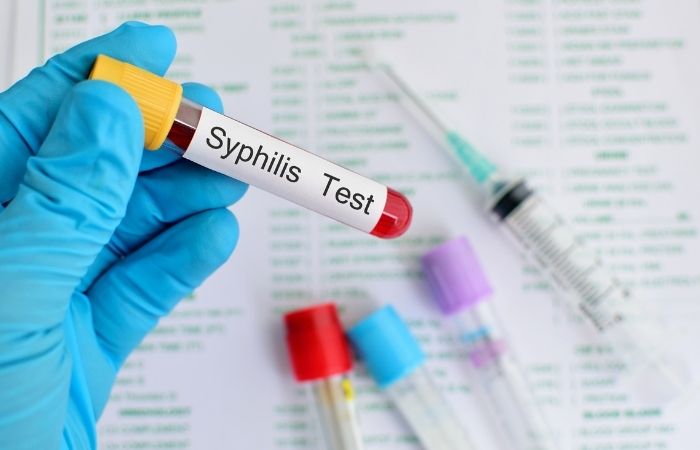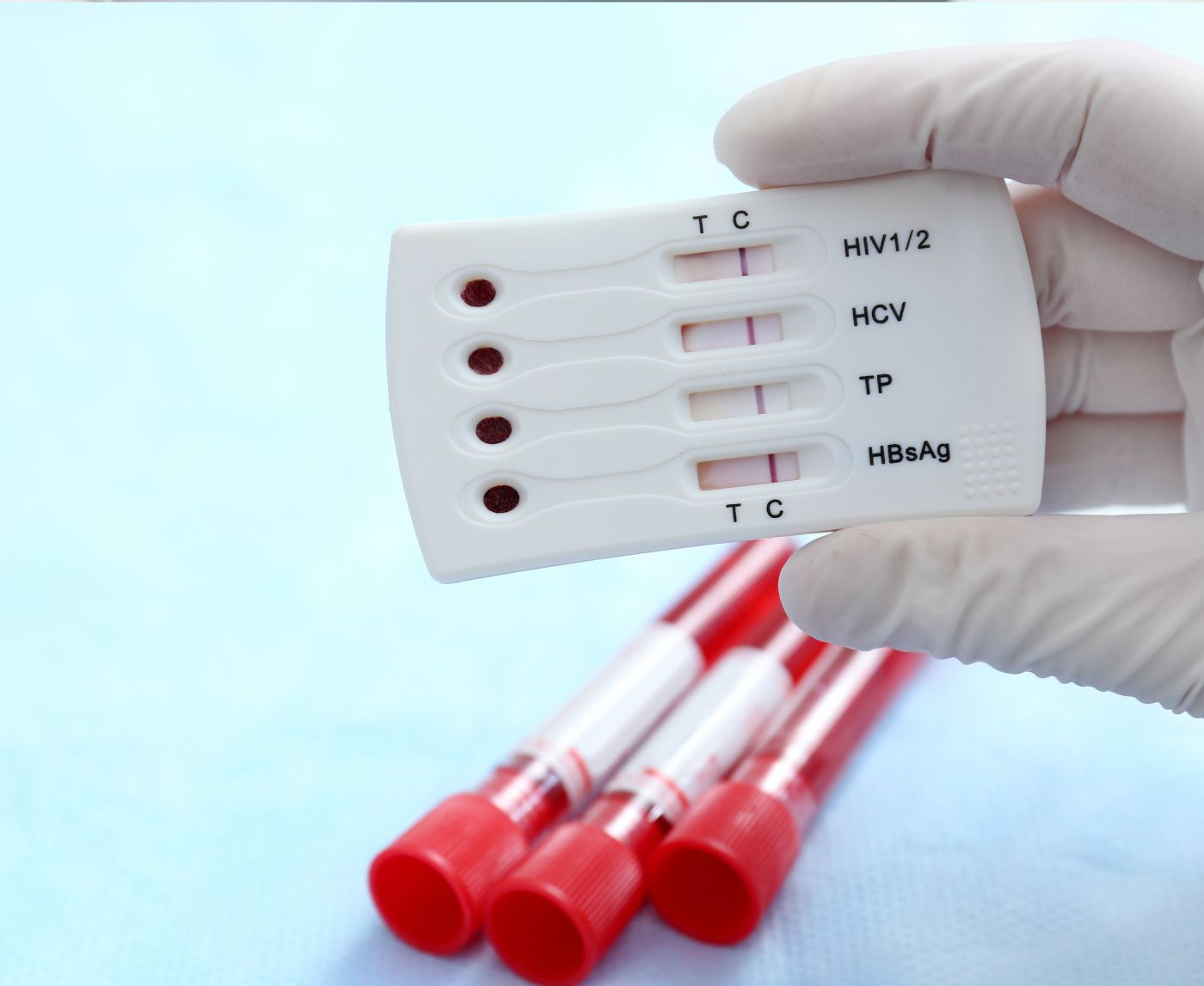Think You Have HIV? Why Testing Too Early Can Backfire
Quick Answer: Syphilis is coming back in the U.S. because testing is hard to get, people are taking risks, and public health isn't getting enough money. But early detection with rapid tests makes it very easy to treat.
What’s Really Fueling the Syphilis Comeback?
This isn’t a one-cause crisis. Syphilis is roaring back because of a perfect storm of social, medical, and behavioral breakdowns. Let’s walk through what public health experts are seeing, and what real people are living.
- Safer sex complacency: In the 90s, fear of HIV made condoms cool again. But today? PrEP has changed the game, for better and worse. With HIV risk down, many folks (especially in MSM communities) are ditching condoms altogether, forgetting that other STIs like syphilis are still in the mix.
- Drug use and survival sex: Meth and other stimulant use are closely tied to condomless sex. According to the CDC, syphilis rates are rising fastest among women who use drugs, and the crisis deepens when those same women are denied prenatal care, making congenital syphilis more likely.
- Sex ed failures: Let’s be real. Many people in the U.S. have never learned how syphilis spreads or what a chancre even is. In rural areas and conservative school systems, comprehensive sex education is still taboo, and ignorance becomes a petri dish for infection.
- Testing gaps: Syphilis is tricky. It can look like a pimple, a sore throat, or nothing at all. Without routine STI panels, especially for non-MSM adults, many people slip through the cracks. And those cracks? They're widening with every year of public health underfunding.
- Public health burnout: After COVID-19, many STI clinics closed or cut hours. Outreach programs disappeared. And once again, rural and low-income communities got left behind. With fewer places to test, fewer people test, until symptoms get scary.

People are also reading: That Body Ache Might Not Be the Flu: Could It Be Hepatitis B?
Why Congenital Syphilis Hits So Hard
It’s one of the most heartbreaking stats in public health: untreated syphilis in pregnancy causes stillbirth or infant death in up to 40% of cases. That’s not a typo. That’s one out of every 2–3 babies lost because their mother didn’t get tested or treated in time.
Key reasons it’s happening: Prenatal care is often out of reach for unhoused, undocumented, or rural mothers. Some aren’t tested early enough. Others test positive but can’t access antibiotics or follow-up. The result? Babies born with enlarged livers, bone deformities, brain swelling, or worse.
Marisol, 24, didn’t know she had syphilis until after her daughter was born premature and in respiratory distress.
“Nobody offered me a test,” she said. “They told me after that it could’ve been prevented.”
This isn’t a failure of individual behavior. It’s a systemic collapse. And it's one that can be reversed, if we make routine STI testing, including syphilis, a standard part of pregnancy care for every person, not just the “high-risk” ones.
How Syphilis Spreads, and Stays Hidden
Syphilis is a master of disguise. It has four stages, each with a different symptom profile, and in many cases, no symptoms at all. That’s why people pass it without knowing, and why testing matters more than waiting for signs.
The first two stages are the most contagious, and the easiest to treat. But most people don’t realize they have it, because chancres don’t hurt and rashes get misdiagnosed. That’s where rapid testing steps in and changes everything.
How Rapid Syphilis Tests Work (and Why Timing Is Everything)
Syphilis is one of the few STIs we can still cure with a simple injection of penicillin, but only if you catch it in time. That’s why testing is the turning point. And with today’s rapid test options, you can go from “worried” to “in the know” in under 20 minutes, no clinic, no appointment, no judgment.
Most rapid tests for syphilis detect antibodies, proteins your immune system makes in response to the infection. Some newer lab kits combine treponemal and non-treponemal detection, improving accuracy at different stages. But here's the catch: your body needs time to build those antibodies. If you test too early (within 2–3 weeks of exposure), your result might miss the mark.
Think of it like taking a pregnancy test the day after sex. No matter how accurate the test is, the timing matters just as much.
Bottom line? If it’s been less than 3 weeks since exposure, consider waiting, or plan to retest. If it’s been over 4 weeks, a quality at-home rapid test like the Syphilis Test Kit can offer answers quickly, privately, and without leaving home.
The Mistakes People Make with At-Home Tests
Even the most accurate test can give the wrong result if it’s not used properly. And let’s be honest, when you're panicked and alone in your bathroom at 2AM, it's easy to mess things up. Here are some of the most common missteps (and how to avoid them):
- Testing too soon: You bought the test right after a sketchy hookup. You’re scared. You test. It’s negative. You breathe... and think you’re safe. But the truth is, it was too early for your immune system to react. Retest at 6 weeks, or go lab if you can’t wait.
- Skipping instructions: Maybe you’re flustered. Maybe the font is tiny. Either way, skipping steps, like not waiting the full reaction time, can lead to false negatives or unreadable results. Always follow the time markers exactly. Set a timer if you have to.
- Misreading faint lines: A faint line is still a line. Just like with a pregnancy test, any visible marker, no matter how light, means the test picked up antibodies. Don’t second-guess it. Retest or confirm in a clinic if you're unsure.
- Throwing away early: Some results don’t show until the full window (15–20 minutes). Tossing the strip early can mean missing a positive. Think of it like baking, opening the oven too soon ruins the outcome.
Jalen, 32, tested negative on a rapid syphilis test after a weekend bender.
“I thought I dodged it. No symptoms. No worries. Then two months later, I got a weird rash and tested again. Positive. My doctor said I probably tested too early the first time.”
Stories like Jalen’s are common, and they’re why we always recommend retesting if your first test was done inside the 3-week window. The test didn’t fail. It just wasn’t time yet.
If you’re in that early anxiety phase, test once now, then again in a few weeks. Pair it with a combo test kit if you’ve had multiple partners or are unsure what you were exposed to. You’re not being paranoid, you’re being proactive.
Don’t Wait and Wonder, Test from Home
If you're hesitating to test because you're afraid of clinics, judgment, or being seen, you’re not alone. That’s exactly why at-home STI kits exist. The 7-in-1 STD Test Kit covers syphilis and six other common infections, all in one discreet package, delivered to your door.
You get privacy, speed, and control over your health. No more waiting for symptoms. No more Googling “red spot on penis” at midnight. Just answers, and next steps.
What If You Test Positive?
First of all, don’t spiral. Testing positive for syphilis isn’t a moral failure. It means you had sex (welcome to being human) and now your body needs help kicking a bacterial hitchhiker. Good news? Syphilis is curable. One injection of penicillin often does the trick, especially in early stages. No lifelong meds. No drama. Just treatment and follow-up.
Here’s what to do next:
- Confirm your result: If you used a rapid at-home test, get a lab-based confirmation. Clinics usually run a two-step process (screening + confirmation), especially if you're pregnant or in a high-risk group.
- Start treatment: Your provider may recommend benzathine penicillin G, one dose if it’s early, more if it’s advanced. Allergic to penicillin? There are alternatives, but timing becomes even more important.
- Stop sexual activity (briefly): Until you’ve completed treatment and waited the appropriate number of days, avoid sex. This isn’t just about you, it protects partners and helps stop reinfection ping-pong.
- Retest in 3 months: Even with treatment, retesting ensures the infection is fully cleared. If you had multiple partners, consider doing a full panel for other STIs too. Syphilis rarely travels alone.
Telling Your Partner(s) Without Losing Your Mind
This might feel like the hardest part, but it’s also the most powerful. Telling someone they might’ve been exposed is uncomfortable, but it could protect them from serious complications. Plus, if roles were reversed, wouldn’t you want to know?
- Script it out: Not sure what to say? Try this: “Hey, I wanted to let you know I tested positive for syphilis. It’s treatable and I’ve started medication, but you might want to get tested too, just to be safe.”
- Use a tool: If direct conversations aren’t possible (or safe), you can use anonymous partner notification services like TellYourPartner.org or ask your local health department for help. They’ll notify partners without naming you.
- Set a boundary: You’re not responsible for someone else’s reaction. Your job is to inform, not to manage their emotions. You did the right thing by getting tested and by speaking up.

People are also reading: Can You Get an STD at a Sex Party If You Use Protection?
When to Retest (and Why It Matters)
Retesting after treatment isn’t optional, it’s part of the cure. Even if your symptoms are gone, syphilis can hide and come back stronger if it wasn’t fully cleared. That’s why providers recommend follow-up blood work about 3 months after treatment (sometimes again at 6 or 12 months, depending on your case).
Some people also need to retest after re-exposure. If you’re in a high-incidence area or part of an at-risk group (like MSM or sex workers), make STI testing part of your regular wellness routine, just like dental cleanings or oil changes.
Pro tip: Many local health departments offer free syphilis testing, especially in outbreak zones. No insurance needed. No questions asked.
Kendra, 28, was five months pregnant when her doctor told her the unthinkable, her baby had congenital syphilis.
“I didn’t even know I had it. No symptoms, nothing. I wish someone had tested me earlier.”
Her daughter was born with bone deformities and required immediate hospitalization. Kendra’s case wasn’t rare. In 2023, more than 3,700 babies were diagnosed with congenital syphilis in the U.S., a 10x increase since 2012.
This is why routine testing matters. Not just for people who “look sick” or who check certain boxes. Everyone deserves the chance to catch syphilis early, before it turns into a tragedy.
How to Actually Prevent Syphilis (Yes, Even Now)
Prevention doesn’t have to be perfect, it just has to be proactive. Here’s what works, both on a personal level and a public health one:
- Consistent condom use: Latex condoms reduce the risk of syphilis, but they’re not bulletproof, especially if sores are in places condoms don’t cover. Still, they’re a solid line of defense and worth using.
- Regular STI panels: If you're sexually active, especially with multiple partners or in hookup culture, get tested every 3–6 months. Make it normal, not dramatic.
- Cut through shame: Talk to your partners. Normalize testing. Bring it up before sex instead of after. “Hey, I tested last month, what about you?” is a power move, not a buzzkill.
- Push for better sex ed: The system failed a lot of people. If you’re a parent, teacher, or voter, fight for inclusive, accurate sex education that covers STIs beyond HIV and pregnancy.
- Support public health funding: Vote for leaders who prioritize sexual health. Call your clinic. Show up to town halls. Because when funding drops, infections spike, and vulnerable lives are lost.
FAQs
1. Is syphilis still around? I thought it was an old-timey disease.
It is old, Columbus-era old, but unfortunately, it never fully left. We just stopped talking about it. Now it’s back with a vengeance, especially in places with poor access to healthcare or testing. So yeah, it’s 2025 and syphilis is still a thing. Welcome to public health reality.
2. How would I know if I had syphilis?
You might not. That’s the trap. The first sign is often a painless sore called a chancre, it can show up on your junk, butt, or even your mouth. But it doesn’t hurt, so most people miss it. Weeks later, a rash might pop up. Or... nothing at all. That’s why testing matters. Symptoms are not a reliable narrator.
3. Can I test too early?
Yep. Your body needs time to react to the infection before it’s detectable. If you test within the first 2–3 weeks after a risky hookup, you might get a false negative. Best bet? Wait until week four or test twice, once now, once later. Better safe than sorry (or contagious).
4. Do I have to tell my partner if I test positive?
Legally, it depends on your state. But ethically? If there’s a chance you exposed someone, telling them gives them a shot at early treatment. You don’t have to write a Shakespearean apology, just a quick heads-up. And if it’s not safe to tell them directly, anonymous tools exist. You’re not alone in this.
5. What happens if I ignore syphilis?
Not to scare you, but… untreated syphilis can lead to blindness, brain damage, heart problems, or even death. And if you're pregnant, it can harm your baby. The early stages are treatable with one injection. The later stages? That’s when it gets ugly.
6. Can I get syphilis again after treatment?
Yes. Syphilis doesn’t give you immunity like chickenpox. You can get reinfected if you're exposed again. So even if you’ve had it before, keep testing, especially if you're in a high-risk group or have multiple partners.
7. Can you really test for syphilis at home?
You absolutely can. At-home rapid tests are reliable (especially 3+ weeks after exposure), discreet, and easy to use. Just follow the instructions and give it time to develop fully. One tip: don’t rush the timer. The test can’t read your anxiety.
8. What if my result is faint? Like... barely there?
A line is a line. Even if it’s faint, the test detected antibodies. That means it picked something up, and you should follow up with a confirmation test. It’s not a guessing game. If in doubt, act like it's a “yes” until a lab says otherwise.
9. I don’t have symptoms. Should I still get tested?
If you’re sexually active, yes. If you’ve had new partners, yes. If you’re pregnant or thinking about it, definitely yes. Symptoms don’t always show, but the infection still does damage. Testing = self-respect, not paranoia.
10. How do I bring up testing with someone I’m dating?
Casually and confidently. Try: “Hey, I just did my regular STI test, have you been tested lately?” If they flinch, that tells you something. Testing shouldn’t kill the mood. If anything, it builds trust, and keeps the sex stress-free.
You Deserve Clarity, Not Shame
This isn’t about dirty vs clean. It’s about facts, access, and the freedom to make informed choices. Syphilis doesn’t care who you are, where you live, or how good your intentions were. But you? You can care enough to take charge, whether that means testing tonight, booking a follow-up, or telling someone else they should check in too.
The most powerful weapon against this resurgence isn’t just antibiotics, it’s awareness. And that starts with you.
How We Sourced This Article: To make sure this article is correct and compassionate, we used current CDC guidelines, peer-reviewed research, case reports, and public health trends. This content was based on about fifteen reliable sources. Below, we've listed a few of the most important ones for readers to learn more about.
Sources
2. CDC Reports Latest National Data on Syphilis in Newborns and Sexually Transmitted Infections (STIs)
3. Why Is Syphilis Spiking in the U.S.? | Johns Hopkins
4. Resurgence of Syphilis in the United States – PMC
5. Syphilis – Treatment Guidelines (CDC)
About the Author
Dr. F. David, MD is a board-certified infectious disease physician with a special interest in STI prevention and diagnostic accessibility. He writes with clinical accuracy and street-level compassion, aiming to replace shame with science at every turn.
Reviewed by: H. Silva, MPH, NP | Last medically reviewed: November 2025







